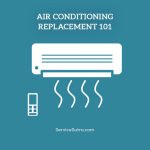Updated: May 19th, 2021
Today, almost everything is running on electricity, from appliances to even some car models. However, despite all the advancements that make life comfortable, there are still several electrical problems in your home that might arise at some point.
Do not quickly blame the power grid due to its archaic structure. Remember that the wiring within most houses is also out of date. As a result, these wires are straining to supply a wide array of appliances, electronics, and lighting fixtures that require electricity.
Below, take a look at the common causes of electrical problems in your home and solutions to fix them.
Overloading
Often, when you use a bulb or any fitting with higher wattage than the light fixture, it can result in a common electric issue—overloading.
The bulb’s high level of warmth can melt the socket and the insulation in the fixture wires. Sparks can form from one wire to another, resulting in an electrical fire. Even if you remove the bulb, the socket and the wires have already sustain damage. Make sure that you’ll be using a bulb or any fittings by staying within the ideal wattage. In case the fixtures do not have a label on the right wattage, try using a 60-watt bulb or a smaller one to stay safe.
Electrical surges
An electric surge can occur due to poor wiring in the house, faulty appliances, downed power lines, or lightning strikes. Surges are common and typically last for a short while, but these can destroy your electronics and appliances, shortening their lifespan, most especially if the surges occur frequently.
Ensure that you inspect the device that connects to the home grid or the wiring. Disconnect the mediocre-quality power boards or devices from the outlet. In case the surges stop, this solves the issue. If the electrical surges continue, it is best to get in touch with a professional electrician from a reputable firm, such as Modernphe.com.
Power sags and dips
Just like with electrical surges, the sags and dips in the electricity are likely due to the devices connecting to your power grid, and which are faulty or made with mediocre-quality materials. Remember that these devices take up a lot of power if you switch them on. Sags and dips can also occur if you have several large appliances running simultaneously, especially when using up significant power from an out-of-date electrical panel. In most cases, such an occurrence only lasts a second, wherein the lights dim and brighten again, without turning off completely.
Uncovered junction box
The junction box contains several wires that are connected and installed during construction. Once it is bare or left open, a person is at risk of getting a shock from a damaged wire. The box should have a cover. If it is open, it poses a safety hazard. The junction box’s main purpose is to protect anyone against electrical shocks and prevent a fire from spreading that typically starts on damaged wires. Make sure to cover it with the screws provided.
Light switches are not working
The main reason for this electrical problem in your house might be poor-quality or substandard products, with dim switches that do not properly adjust the lights. In some cases, it might be faulty wiring, outlet, or circuit. It is best to get in touch with an electrician to carry out proper repairs.
Frequent tripping of the circuit breaker
High wattage appliances and electronics, such as hair dryers and microwaves, can easily trip the circuit breakers, especially when other high-consuming items are used simultaneously through the same source. Take note that a circuit break works to protect your house; once it trips, it is an indication that it is doing its job.
You should check what you were using when it tripped. Depending on the appliance or electronic responsible, try using it at a low setting. Additionally, limit the electrical consumption on a single circuit while you are using high-watt devices.
Flickering light
During windy weather, you might experience flickering light. The problem might be brought about by frayed wiring that causes a short once the cables are moving. It is a potential risk since it can abruptly start a fire. Once you suspect this issue, call an electrician right away since it might require the replacement of the weatherhead.
Limited outlets
Today, the majority of houses utilize extension cords and power strips. In case you do not use heavy load extension cords, such as 14-gauge or thicker, the risk for problems will be minimal. Remember that the thicker the wire, the lower the gauge number. The smaller or 16-gauge extension cords are likely to overheat and start a fire if the loads are too heavy.
The ideal solution is to install more outlets. Although the service has a price that involves creating holes in the walls and ceilings to insert the wires, consider it as an investment that will keep your house safe in the long run.
Lack of GFCIs
You are in high danger of electrocution in wet areas, such as the kitchen or bathroom. The GFCIs or ground-fault circuit interrupters work by turning off circuits in four milliseconds before the electric current can cause a fatal shock. The solution is to swap the old receptacles with GFCIs by hiring an electrician, or you can work on the task on your own.
Overwired panel
If a panel contains several circuits, you have an overwired panel. The tandem breakers serve as a replacement for several of the single-pole breakers in one slot. Take note that a label on every panel indicates the level of circuits the panel can accommodate. The solution is adding a subpanel or replacing the current one with a bigger model if you are planning a big overhaul or renovation of your house soon.
Aluminum wiring
In the 1960s and 1970s, aluminum was an affordable alternative for copper, but it is no longer a safe option today. Aluminum corrodes once in contact with copper, resulting in slack connections, leading to arcing and fires.
The remedy is to add an aluminum wire to copper connection to a dielectric wire nut for light fixtures. The nuts have a special grease that stops corrosion, while ensuring proper conductivity. Always check that any new switches and receptacles are AL-compatible.
Backstabbed wires
If you suspect this electrical problem, it is likely to occur on newly-installed switches and receptacles. The issue occurs when the wires move back significantly to those anchored around the screw terminals. When it comes to the danger level, the loose wires will make a switch or receptacle non-functional. In a worse scenario, it can start a fire.
You can assess for backstabbed connections by taking out the switch or receptacle from its outlet box. In case one is backstabbed, more wires may follow suit. Set the wires free and affix them to the correct terminals on the receptacle.
Plug falling out of the receptacle
When a plug falls out of a receptacle, it simply means the worn contacts in a receptacle do not securely grip the prongs. There is a high danger level since loose contacts can result in arcing, igniting dry wood and dust. You should take out the old receptacles right away and replace them with new ones. Most homeowners can tackle this task or hire an electrician to work on the replacement job.
Electric shock
If you are not using electricity properly, it will put you at risk of an electric shock, which can be an undesirable experience. The risk of this electrical issue in old houses is high due to the circuits fitted during the past. An electric shock occurs once you switch on or off a device. The issue might stem from the appliance or even the wiring. You can test this by plugging in a different device and checking if the results are the same. Sadly, you are putting yourself at risk for another electric shock. The best approach is to consult an electrician for a proper assessment of the issue.
Ungrounded receptacles
If you have ungrounded receptacles, the wiring in your house does not have a safe way to control any loose current that runs off the wiring. There is a low risk of danger. Do not utilize an adapter to load a three-prong plug into a receptacle that has two prongs. If you do this, it will damage the device you are plugging in and increase electrocution risk.
The remedy to this electrical problem is to swap out two-prong receptacles with well-grounded three-prong receptacles, if possible. Do not forget to test all current three-prong receptacles using a GFCI circuit tester to see that they are grounded.
When you are facing any of these electrical problems in your house, try to be careful at all times since they pose a dangerous hazard. Depending on the type of electrical issue, you might be able to deal with it, but if you do not have the skills, it is best to get in touch with an electrician to deal with the problem correctly while staying safe at the same time.






